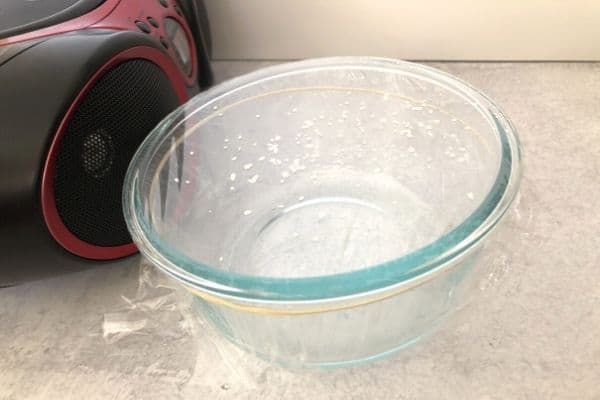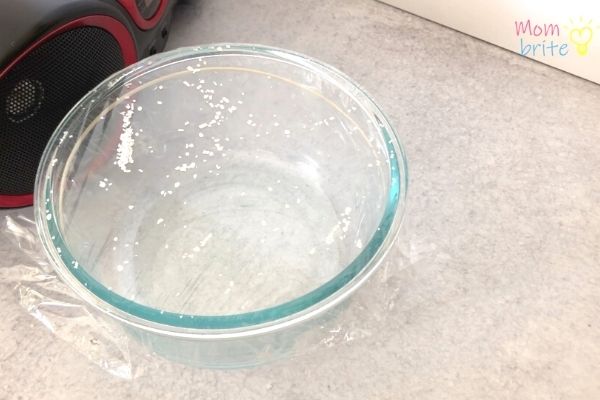The concept of sound waves is not the easiest to teach to kids. For light, you can do experiments like the reversing arrow or the disappearing water trick to show refraction. There are numerous experiments, like the balloon-powered LEGO car, to show motion. But you can’t see sound waves because they are vibrating so fast.
Or … can you?

In this salt vibration experiment for kids, we are going to make sounds waves visible. You may want to close the doors because this simple sound experiment is going to be loud!
How to See Sound
Materials:
- Glass bowl
- Clear plastic wrap
- Large rubber band
- Sea salt or rice or sprinkles
- A sound source (speakers or CD player)
Directions:
- Cover the glass bowl with the plastic wrap. You want to make sure to stretch the plastic wrap very tight across the top of the bowl.
- Wrap the rubber band around the bowl to hold the plastic wrap in place.
- Place the bowl very close to a speaker or CD player.
- Sprinkle some salt on the plastic wrap.
- Play your favorite music through the speaker. Turn the volume up and watch what happens to the salt!

Did your salt party like it’s 1999? Did the salt react differently to different songs?
My kids took the glass bowl and ran around to different sound sources in the house. We tried Echo Dot, a CD player, the piano… pretty much anything that made loud noises. We even tried yelling at the glass bowl while covering our mouths (don’t want to blow the salt off the plastic wrap).
I was impressed at how much the salt vibrated and danced around on the plastic wrap. Some even popped off during parts of the songs that have very loud and deep sounds.
Science Behind the Salt Vibration Experiment
Sound is caused by vibrations traveling through a medium. In the string telephone experiment, we saw that sound can travel through the air to the cup, then through the string, to the cup on the other side, and eventually reaching our eardrum.
Loud sounds can make nearby objects vibrate. When you place the bowl next to a speaker, vibrations in the speaker moved through the air and reached the plastic wrap. These vibrations cause the grains of salt to dance.
Science Extensions
- Play different songs and see which songs make the salt bounce the most.
- Hit a drum or a pan near the glass bowl. Does the salt move?
- Move the glass bowl away from the speaker. How far can you move it before the salt stops moving?
- If you have a Bluetooth speaker, try placing the speaker inside the bowl. Are the vibrations stronger with the speaker inside the bowl?
- Use rice or sprinkles instead of salt.
- Use a smaller or bigger bowl. Does the salt bounce more with the bigger or smaller bowl?
YOU MAY LIKE:
